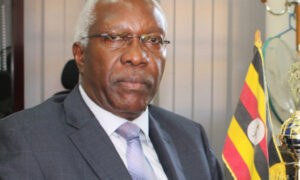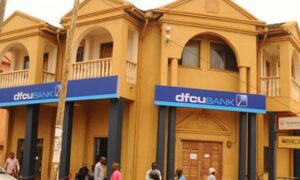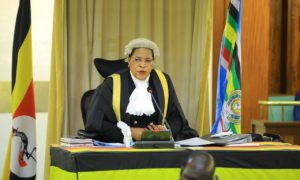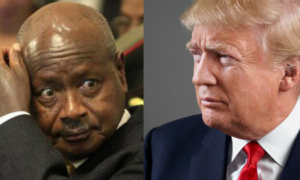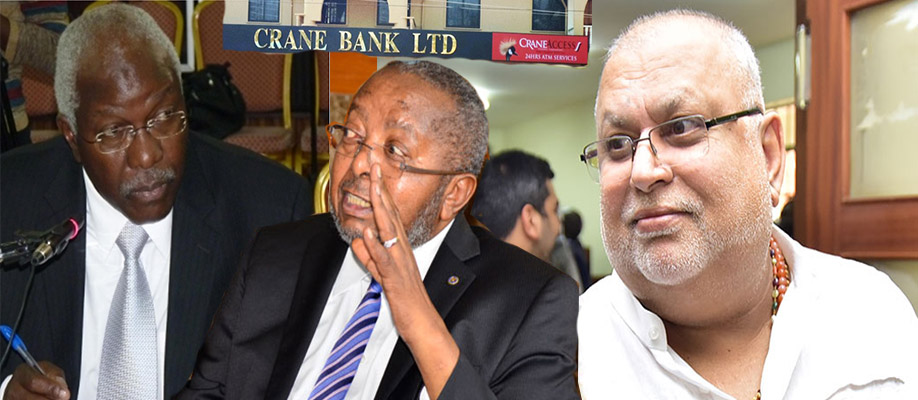
Auditor General John Muwanga, Governor Emmanuel Mutebile, and City Tycoon Sudir Ruparelia
Bank of Uganda (BoU) did not follow the lawful procedures in the closure of Crane Bank and six other commercial banks the new Auditor General (AG)’s report submitted to Parliament on Wednesday, 12th September has shocked the nation.
This was revealed in the 94-page report special audit solicited by the Parliamentary Committee on Statutory Authorities and State Enterprise (COSASE) to guide a wider investigation the committee intends to carry out on the controversial sale of Crane Bank, formerly owned by tycoon Sudhir Ruparelia.
Other banks allegedly closed illegally by Bank of Uganda include Teefe Bank, International Credit Bank Ltd, Greenland Bank, The Co-operative Bank, National Bank of Commerce and Global Trust Bank.
The Central Bank is accused of not following any guidelines/regulations or policies in the sale of Crane Bank to dfcu Bank last year and in the closure of the other banks.
“I observed that there were no guidelines/regulations or policies in place to guide the identification of the purchases of the defunct banks. There were also no guidelines to determine the procedures to be adopted by Central Bank in the sale/ transfer of assets and liabilities of the defunct banks to the identified purchaser,” the AG report reads in part.
The AG, Mr John Muwanga, also said the Central Bank did not carry out an evaluation of the assets and liabilities of Crane Bank before they were transferred to dfcu Bank.
“On April 10, 2018, I requested for P&A agreement, including details of the assets and liabilities transferred after taking into account the requisite valuation. I noted that BoU did not carry out a valuation of the assets and liabilities of CBL. In the absence of the valuation, I could not establish how the terms for the transfer of assets and liabilities in the P&A were determined,” Mr Muwanga’s report reads in part.
It should be noted that recently, Meera Investments dragged Dfcu Bank to the Land Division of the High Court, seeking to reclaim its 46 branches which it says were acquired illegally following the dissolution of Crane Bank. The closure of Crane Bank saw Dfcu bank become the third biggest bank after acquiring 46 branches from the financial institution. According Meera the time BoU took over the management of then Crane Bank in October 2016 before its eventual sale to DFCU, it was the leaseholder of the suit properties and paying $6,000 every beginning of the year.
The AG’s report has also raised questions on how BoU signed a Purchase of Assets and Assumption of Liabilities agreement with Dfcu on January 25, 2017, for the purchase of Crane Bank.
“I was not provided with the negotiation minutes leading to the P&A agreement. In the absence of the minutes, I could not determine how BoU selected the best-evaluated bidder and how the terms in P& A were determined. I also noted that the P&A did not have complete details of assets and liabilities transferred to dfcu with their corresponding values; I was, therefore, unable to establish the status of assets and liabilities transferred to dfcu,” the report adds.
As aprlaiment gets set to begin debating the report that was already been served to the Speaker, the aggrieved Crane Bank shareholders have already threatened to sue BoU, saying the January 25, 2017 sale agreement was signed by BoU Governor Emmanuel Tumusiime-Mutebile and Mr Juma Kisaame, the managing director of dfcu Bank, without considering the interests of major shareholders of the defunct bank.
It should be noted that during the Uganda Bankers’ Association Annual Bankers’ Conference in July, Central Bank Governor, Emmanuel Tumusiime Mutebile said that Crane Bank was taken over in order to minimize the losses incurred and protect the interests of its depositors since it had been declared massively insolvent as a result of mismanagement and fraud.
Mutebile He said that in order to protect the interests of a distressed bank’s depositors, the regulator has a responsibility to intervene promptly in a bank that is severely undercapitalized or insolvent, and, if necessary, to take over the bank and resolve it.
Mutebile added that after the BoU had intervened in Crane Bank and taken it over in October 2016, an inventory of its assets and liabilities was commissioned and carried out by a reputable accounting firm.
“After the BoU had intervened in Crane Bank and taken it over in October 2016, an inventory of its assets and liabilities was commissioned and carried out by a reputable accounting firm. This inventory found that Crane Bank was massively insolvent, with core capital of negative Shs. 240 billion, as a result of mismanagement and fraud. The notion that this bank could have been rehabilitated by its owners – the same people who were responsible for its failure – if only the BoU had provided more liquidity support and allowed the owners to remain in control, is not tenable.” Mutebile said.



